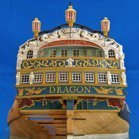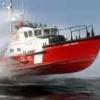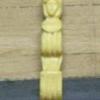Supplies of the Ship Modeler's Handbook are running out. Get your copy NOW before they are gone! Click on photo to order.
×
-
Posts
429 -
Joined
-
Last visited
Reputation Activity
-
 Ondras71 reacted to Valeriy V in Varyag 1901 by Valeriy V - FINISHED - scale 1:75 - Russian Cruiser
Ondras71 reacted to Valeriy V in Varyag 1901 by Valeriy V - FINISHED - scale 1:75 - Russian Cruiser
For the anchor chain, the anchor itself is needed, I had to make it.
-
 Ondras71 reacted to Valeriy V in Varyag 1901 by Valeriy V - FINISHED - scale 1:75 - Russian Cruiser
Ondras71 reacted to Valeriy V in Varyag 1901 by Valeriy V - FINISHED - scale 1:75 - Russian Cruiser
Soldering is the simplest, with a soldering iron and tweezers.
-
 Ondras71 reacted to Valeriy V in Varyag 1901 by Valeriy V - FINISHED - scale 1:75 - Russian Cruiser
Ondras71 reacted to Valeriy V in Varyag 1901 by Valeriy V - FINISHED - scale 1:75 - Russian Cruiser
Anchor chain before and after nickel plating.
-
 Ondras71 reacted to Valeriy V in Varyag 1901 by Valeriy V - FINISHED - scale 1:75 - Russian Cruiser
Ondras71 reacted to Valeriy V in Varyag 1901 by Valeriy V - FINISHED - scale 1:75 - Russian Cruiser
Yes, Phil, I'm not bored at all.
-
 Ondras71 reacted to Valeriy V in Varyag 1901 by Valeriy V - FINISHED - scale 1:75 - Russian Cruiser
Ondras71 reacted to Valeriy V in Varyag 1901 by Valeriy V - FINISHED - scale 1:75 - Russian Cruiser
Anchor on the brackets.
-
 Ondras71 reacted to Valeriy V in Varyag 1901 by Valeriy V - FINISHED - scale 1:75 - Russian Cruiser
Ondras71 reacted to Valeriy V in Varyag 1901 by Valeriy V - FINISHED - scale 1:75 - Russian Cruiser
As skills and experience in working with metal appear, this time decreases.
-
 Ondras71 got a reaction from Hubac's Historian in Roter Löwe 1597 by Ondras71
Ondras71 got a reaction from Hubac's Historian in Roter Löwe 1597 by Ondras71
Thank you very much Silverman. Thanks for the like! 😇
I have been thinking for a long time about finishing the connection of the front stem according to Witsen..
Replica of Barents' ship..
So I added it. The cuts were made with a 0.15 mm thick razor saw, and 0.09 mm black paper was placed..
Klinkbout will be added after grinding..
And now really a balcony..
-
 Ondras71 got a reaction from Archi in Roter Löwe 1597 by Ondras71
Ondras71 got a reaction from Archi in Roter Löwe 1597 by Ondras71
Thank you very much Silverman. Thanks for the like! 😇
I have been thinking for a long time about finishing the connection of the front stem according to Witsen..
Replica of Barents' ship..
So I added it. The cuts were made with a 0.15 mm thick razor saw, and 0.09 mm black paper was placed..
Klinkbout will be added after grinding..
And now really a balcony..
-
 Ondras71 got a reaction from GrandpaPhil in Roter Löwe 1597 by Ondras71
Ondras71 got a reaction from GrandpaPhil in Roter Löwe 1597 by Ondras71
Thank you very much Silverman. Thanks for the like! 😇
I have been thinking for a long time about finishing the connection of the front stem according to Witsen..
Replica of Barents' ship..
So I added it. The cuts were made with a 0.15 mm thick razor saw, and 0.09 mm black paper was placed..
Klinkbout will be added after grinding..
And now really a balcony..
-
 Ondras71 got a reaction from Barbossa in Roter Löwe 1597 by Ondras71
Ondras71 got a reaction from Barbossa in Roter Löwe 1597 by Ondras71
Thank you very much Silverman. Thanks for the like! 😇
I have been thinking for a long time about finishing the connection of the front stem according to Witsen..
Replica of Barents' ship..
So I added it. The cuts were made with a 0.15 mm thick razor saw, and 0.09 mm black paper was placed..
Klinkbout will be added after grinding..
And now really a balcony..
-
 Ondras71 got a reaction from Archi in Roter Löwe 1597 by Ondras71
Ondras71 got a reaction from Archi in Roter Löwe 1597 by Ondras71
Thank you Tony
The first part of the railing is finished, the system of sliding the hollow posts on the pins works..
Reinforced with long pins..
Further work, installation of the top mirror plate..
-
 Ondras71 got a reaction from Archi in Roter Löwe 1597 by Ondras71
Ondras71 got a reaction from Archi in Roter Löwe 1597 by Ondras71
I work on the bent parts of the stern railing..
-
 Ondras71 reacted to Michiel in Prins Willem 1650 by Michiel - 1:50 - POB Zeeland ship from own plans
Ondras71 reacted to Michiel in Prins Willem 1650 by Michiel - 1:50 - POB Zeeland ship from own plans
Slowly moving towards full treenailing on port side. Two new ports added as well and the final row of timbers. Still 4 more small ports to add on this side. Afterwards I ll turn her around and continue on that side.
-
 Ondras71 got a reaction from Siggi52 in Roter Löwe 1597 by Ondras71
Ondras71 got a reaction from Siggi52 in Roter Löwe 1597 by Ondras71
Thank you very much Silverman. Thanks for the like! 😇
I have been thinking for a long time about finishing the connection of the front stem according to Witsen..
Replica of Barents' ship..
So I added it. The cuts were made with a 0.15 mm thick razor saw, and 0.09 mm black paper was placed..
Klinkbout will be added after grinding..
And now really a balcony..
-
 Ondras71 got a reaction from marktiedens in Roter Löwe 1597 by Ondras71
Ondras71 got a reaction from marktiedens in Roter Löwe 1597 by Ondras71
Thank you very much Silverman. Thanks for the like! 😇
I have been thinking for a long time about finishing the connection of the front stem according to Witsen..
Replica of Barents' ship..
So I added it. The cuts were made with a 0.15 mm thick razor saw, and 0.09 mm black paper was placed..
Klinkbout will be added after grinding..
And now really a balcony..
-
 Ondras71 got a reaction from petervisser in Roter Löwe 1597 by Ondras71
Ondras71 got a reaction from petervisser in Roter Löwe 1597 by Ondras71
Thank you very much Silverman. Thanks for the like! 😇
I have been thinking for a long time about finishing the connection of the front stem according to Witsen..
Replica of Barents' ship..
So I added it. The cuts were made with a 0.15 mm thick razor saw, and 0.09 mm black paper was placed..
Klinkbout will be added after grinding..
And now really a balcony..
-
 Ondras71 got a reaction from Michiel in Roter Löwe 1597 by Ondras71
Ondras71 got a reaction from Michiel in Roter Löwe 1597 by Ondras71
Thank you very much Silverman. Thanks for the like! 😇
I have been thinking for a long time about finishing the connection of the front stem according to Witsen..
Replica of Barents' ship..
So I added it. The cuts were made with a 0.15 mm thick razor saw, and 0.09 mm black paper was placed..
Klinkbout will be added after grinding..
And now really a balcony..
-
 Ondras71 reacted to Brinkman in Roter Löwe 1597 by Ondras71
Ondras71 reacted to Brinkman in Roter Löwe 1597 by Ondras71
Great build and the colours on the sides are just amazing!
-
 Ondras71 reacted to mati in Papegojan 1627 by mati - FINISHED - 1/48
Ondras71 reacted to mati in Papegojan 1627 by mati - FINISHED - 1/48
Hi All,
Recently someone took my inspiration, so I had some time off from my model 😆😆
Anyway, it came back so here's some update.
Standing rigging it's almost completed. Just futtock shrouds are missing.
I guess it's good time to start doing final tension adjustment...
All leechline and buntline blocks got their place on the shrouds.
Also, you can see crowfoot on mainstay (interesting piece of rigging, used as a preventer for sails to go under the top)
Enjoy the photos!
At that stage model looks like as below
Cheers,
Matt
-
 Ondras71 reacted to allanyed in Saint Philippe 1693 by CRI-CRI - FINISHED - scale 1/72 - French warship from Lemineur monograph
Ondras71 reacted to allanyed in Saint Philippe 1693 by CRI-CRI - FINISHED - scale 1/72 - French warship from Lemineur monograph
Hi Christian,
Three mm moulded is about 8.5 inches at your scale which is about double what I am used to seeing. With this dimension plus the thickness of the planking inboard and outboard, the cap rail would be about 14 inches wide or more . Is this correct for your St. Philippe? I like the heaviness of these top timbers from a modeling stand point as they can easily break when at scale (I speak from experience and many curse words have ensued when it happens) but it may not look right. I am not saying it is wrong, but it is just something different than what I have seen for British ships, the top timbers running from about 2.5" (<1mm at 1:72) to 5" (1.76mm at 1:72) moulded dimension in the late 17th century depending on the rate.
-
 Ondras71 reacted to Hubac's Historian in Saint Philippe 1693 by CRI-CRI - FINISHED - scale 1/72 - French warship from Lemineur monograph
Ondras71 reacted to Hubac's Historian in Saint Philippe 1693 by CRI-CRI - FINISHED - scale 1/72 - French warship from Lemineur monograph
I am sorry, Christian, that you seem to take this commentary as a personal attack. I hope you will understand that that is far from the spirit that is intended.
I only offer observations and criticism when I believe the builder is capable of doing something with that information. I followed your build, in the first place, because I believe you can pull it off, so to speak. You are making a nice job of it, so far.
The objective of my commentary is solely to help you avoid creating a circumstance, early, that is difficult or impossible to remedy later.
Of course, I respect your wish to work privately and wish you the best of luck!
-
 Ondras71 reacted to CRI-CRI in Saint Philippe 1693 by CRI-CRI - FINISHED - scale 1/72 - French warship from Lemineur monograph
Ondras71 reacted to CRI-CRI in Saint Philippe 1693 by CRI-CRI - FINISHED - scale 1/72 - French warship from Lemineur monograph
I inform you that I stop now to publish my work about Saint Philippe, I prefer take more time for
modelling, and less for prepare and comment pictures, sure that you will understand my choice... ☺️
-
 Ondras71 reacted to James H in HMS Sphinx 1775 by James H - FINISHED - Vanguard Models - 1:64
Ondras71 reacted to James H in HMS Sphinx 1775 by James H - FINISHED - Vanguard Models - 1:64
Just a small update.
Sphinx comes with a series of jigs to ensure that the bulwarks are always properly spaced throughout your build as the upper decks will depend on it. There is always a little leeway, but at least you can check things as they are planked etc. These are the jigs which are not glued into position.
I'm halfway through fairing the hull, but been doing some other stuff between tasks. This time I turned my attention to the 20 cannon and the binnacle. The binnacle is a nice, easy item to construct and there's little to do wrong. In fact, I can't see how anyone could stuff this up.
The cannon are also very easy, just time consuming as mass producing any one individual item always is. Note that with these, there are no fiddly PE capsquares to fit. This time, they are a part of the pearwood carriage sides. So no awkward bending and fitting to do. What this does mean is that you will need to paint the carts before complete assembly. It's easy enough, and a little paint is just scraped away before gluing the side into position on the rest of the assembly. The guns are also black resin, so no painting needed.
Back to fairing the hull in the morning, then I can get onto fitting the first layer outside bulwark and the first layer of planking.
Until then...
-
 Ondras71 reacted to James H in HMS Sphinx 1775 by James H - FINISHED - Vanguard Models - 1:64
Ondras71 reacted to James H in HMS Sphinx 1775 by James H - FINISHED - Vanguard Models - 1:64
A week has passed, so I have something I can share that's worthwhile.
With the basic skeleton now assembled, the bulkhead ears strengthened with the longitudinal strips, and the ply deck fitted...I can now finish the framed cannon ports. These are done in the same way that Chris used on Amati's forthcoming Victory that you may have seen in my build log.
These are added in pairs, numbered from the bow, back towards the stern. I push these into position so they are at right angles to the long pot strips I fitted. This is important as they'll need to line up with the inside bulwarks which have the port holes laser-cut.
Stern and now filler blocks are now marked, shaped and fitted. I used a Dremel for these for speed.
Before the inner bulwarks are fitted, I nee to sand the inner bulwark frames smooth. The best way to gauge this is that the work is pretty much done when all the char is removed. There is leeway in subsequent part fitting even if you sand these a little more than just the char, but the char is a good indication.
Another nice feature of this model is that you can fit the inner bulwarks with just clamps, and then paint in the glue from within the frames, once everything is aligned. There's little to no fettling to do here either. The gun ports in the inner bulwarks are also slightly smaller than the framed ports, so you can trim them to size later.
Before the rear inner bulwarks are fitted, two pearwood beams are added to the rear hull. These also tie the stern timbers to the side frames.
Now the rear inner bulwarks are fitted. Any small gaps between the bulwarks and ply deck will be hidden with the deck and the spirketting.
Unlike Chris' test hull, this model will be painted, and the inner bulwarks will be painted red. However, they won't be painted in the cabin areas, but left in varnish. To mark the extent of the paint, I test fit one of the cabin bulkheads.
The inner bulwarks can now be painted. Before paint, the surfaces are sanded with 320 grit paper, and wipe on poly is applied only in the area of the bulwarks that will be painted (spirketting will be fitted to upper and lower bulkheads). I don't like to glue parts onto surfaces where poly has been applied, so take this into consideration. For paint, I airbrush Tamiya Flat Red over the timber, then give a very light brush coat of Vallejo Flat Red, which gives a very pleasing finish.
Once the masking is removed, the laser-engraved maple deck is then fitted. Some adjustment is made to the edges so it fits properly. I use Titebond Extra for this to allow me more time to manoeuvre things. Clamps hold down the deck adding the edges. Small clamps in the middle areas.
The spirketting is also painted in the same colours, but only in the area that will require it (not the cabin!) This is then fitted.
Cabin seat patterns are now adjusted to width and fitted. A little sanding of the MDF frame area needs to be done first, but not too much.
Some MDF parts are now added to the bow area to help with fitting the outer patterns. Anything above deck level will eventually be broken away when the deck is fitted.
Finally, those safety gates which gave strength to the unsupported bulkheads, can be removed as the whole structure is now very strong. After this, the hull can be faired for fitting the outside patterns and planking.
Whilst I was waiting for stuff on the hull to dry, I worked on the stove. Here you see the pear carcass being assembled.
And of course, this is mostly sheathed in photo-etch.
I'll not be sanding this hull until later this week when I finish work for Easter. That means I can do that task outside, but I will work on some deck stuff this week....maybe cannon.
Until next time 😁
-
 Ondras71 reacted to James H in HMS Sphinx 1775 by James H - FINISHED - Vanguard Models - 1:64
Ondras71 reacted to James H in HMS Sphinx 1775 by James H - FINISHED - Vanguard Models - 1:64
Been a busy weekend at chez-Hatch.
I wanted to het the hull skeleton as far as I could so I can fit the laser deck and red bulwarks/spirketting this week. Work starts on the first and last bulkheads which are fitted with their bow and stern patterns respectively. The first bulkhead is dry fitted to the false keel so the two adjacent patterns sit snug to the keel. A clamp was deployed until fully set, then the assembly was removed from the keel and a sanding block/Dremel used to shape. I really do recommend a rotary tool for shaping the stern. It will be make things much, much simpler.
Before shaping the stern, the assembly was slipped back onto the keel and glued to the bulkhead which sits adjacent to it. Shaping was done after removal. The tape on the stern assembly issued to protect the filler panel from breaking away.
With so many bulkheads and interlocking slots, I always like to dry-fit all parts where possible, and then paint wood glue into the joints afterwards. This method works perfectly well, and you can dilute your glue too if you wish. Modern wood glues seem to set too quickly that I see this as a way of making sure everything seats before the glue turns.
With the bulkheads slotted into position (minus the bow and stern assemblies I just made), the small orlop deck section is slotted into place, followed by the laser engraved ply lower deck. Care needs to be taken not to damage the bulkhead ears. If you look closer, you'll see the bulkheads have safely gates on the outside, protecting the ears somewhat. These are removed later, before fairing the hull.
The model is now turned upside down and supported while I paint wood glue into the various joints between the MDF and ply parts.
The bow and stern sections are now finally slotted into place and glued.
It's important that the bulkhead ears are protected from quite early on in the build, so I changed the sequence so that the longitudinal gun port strips are now glued into place. These are labelled 'TOP' and 'BOTTOM' to remove any confusion.
The blanking/strengthening section on the rear bulkhead can now be carefully twisted away as the bulkhead ears are now protected. We also need to later fit the stern gallery timbers which will run through this area.
The first pear wood is now used with the grate coamings. These are assembled and the outer edges have their char removed. I also remove star from the two open sections that won't have grates fitted.
Now, the deck beams can be glued into position. Clamps ensure they are aligned and vertical. With these in position, the coamings and gratings are glued into place.
Four longitudinal deck support strips are now fitted, with one pair being 'OUTER' and the other 'INNER'.
Finally, for this update, the ply deck is fitted. These sections clip into the bulkhead ears so they are self firmly at that point. All you need to do is to pin them down in the middle. I also chose to paint glue into the joints after fitting the deck parts.
More as soon as I have something to show you. 😃





